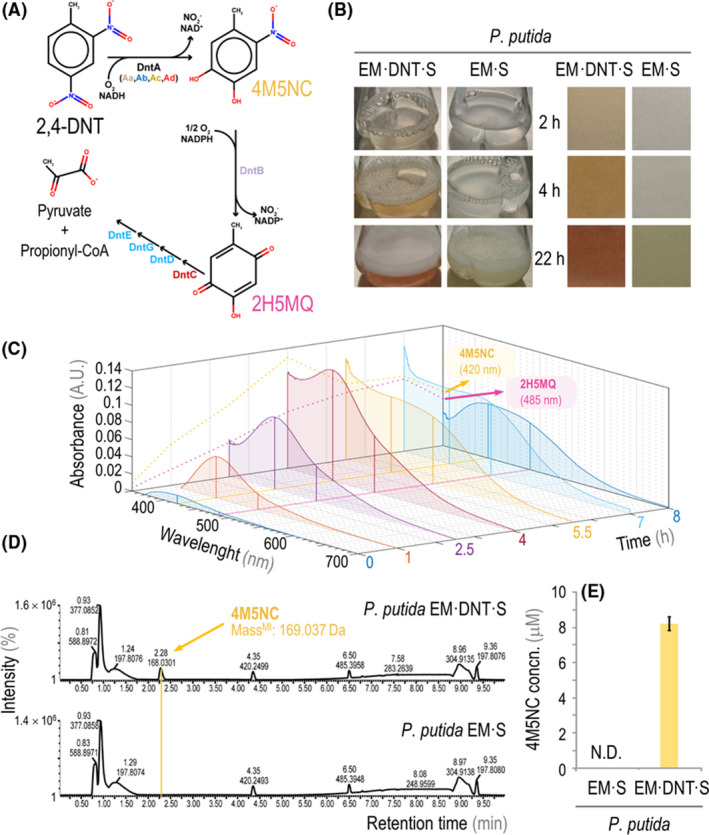Figure 4.

2,4‐DNT biotransformation in mono‐cultures of engineered P. putida.
A. Pathway for the oxidative degradation of 2,4‐DNT in Burkholderia sp. R34. The first step, executed by DntA, is a di‐oxygenation reaction that leads to the formation of 4‐methyl‐5‐nitrocatechol (4M5NC). This intermediate is the substrate for the DntB mono‐oxygenase, yielding 2‐hydroxy‐5‐methylquinone (2H5MQ). In the native context, the pathway leads to the conversion of 2,4‐DNT into pyruvate and propionyl‐coenzyme A (CoA).
B. Representative images of axenic cultures of P. putida EM·DNT·S and P. putida EM·S grown in the presence of 250 μM 2,4‐DNT over time (left column); the zoom‐in of supernatants from these cultures shows the characteristic changes in pigmentation (right column).
C. Time‐course of averaged spectral signatures (n = 3) in supernatants from P. putida EM·DNT·S cultures grown in the presence of 250 μM 2,4‐DNT, as measured via scanning spectrophotometry. The signature absorbance peaks of 4M5NC and 2H5MQ are indicated. A.U., arbitrary units.
D. LC‐MS analysis of culture supernatants of P. putida EM·DNT·S (top panel) and P. putida EM·S (bottom panel) after 4 h of incubation with 250 μM 2,4‐DNT. The peak corresponding to the monoisotopic mass of 4M5NC (massMI) is indicated by a yellow line.
E. LC‐MS quantification of the 4M5NC concentration (concn.) in supernatants of P. putida EM·S and P. putida EM·DNT·S cultures after 4 h incubation with 250 μM 2,4‐DNT. All cultures were grown in M3 minimal medium with sucrose at either 20 g l−1 (B) or 2 g l−1 (C–E). N.D., not detected.
